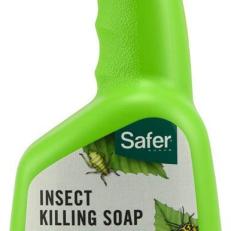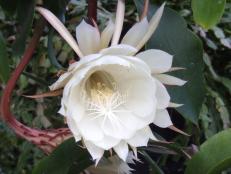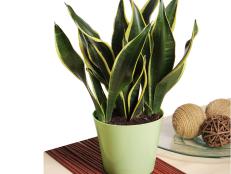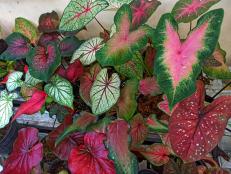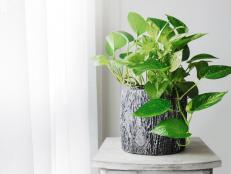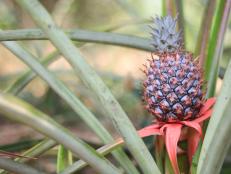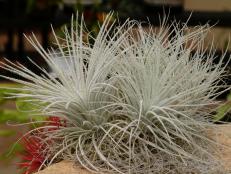How to Grow and Care for Polka Dot Plant
Add vibrant color indoors or to your containers with these tips for caring for polka dot plant.
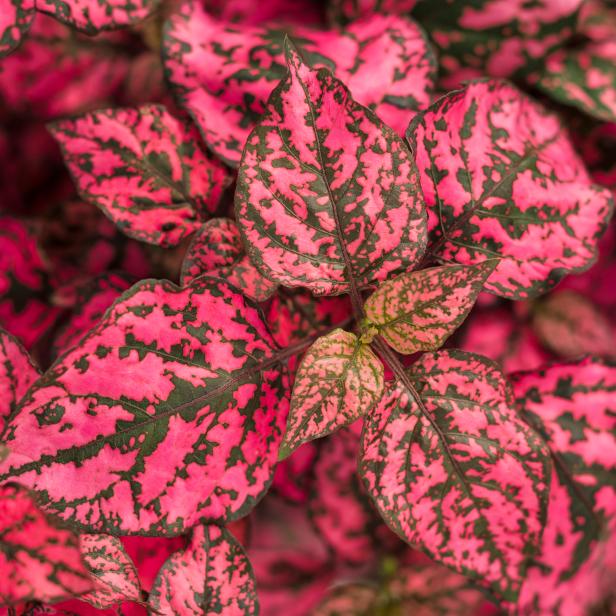
ProvenWinners.com
Hippo Rose polka-dot plant (Hypoestes) delivers outstanding color with contrasting shades of hot pink and deep green.

We are drawn to classic patterns like polka dots for their playful charisma and how they enliven most any space, style or surface. While a true polka dot is rare in the plant world, Hypoestes phyllostachya sports striking ornamental foliage that belongs in the tapestry of every garden. Polka dot plant is a vibrant, beginner-friendly choice for tropical landscaping, patio containers or indoor decor. Read on to size up this fashion-forward foliage plant and learn how to grow and care for polka dot plant in your own space.
About Polka Dot Plants
Hailing originally from Madagascar, this herbaceous tropical plant is hardy to Zones 10-11, where it thrives as an evergreen perennial. UW-Madison’s Cooperative Extension notes that polka dot plant has been most commonly used as a houseplant in temperate zones, however it is gaining traction as an annual bedding and container plant. Any well-stocked local garden center should stock polka dot plants in the annuals section or indoor greenhouse.
Botanical name: Hypoestes phyllostachya
Common Name: Polka dot plant
Special Features: Striking, freckled leaf patterns
Plant Type: Herbacious, perennial; annual bedding plant
Size: Compact and mounding; 16-22 inches tall and 18-24 inches wide
Light Requirements: Part to full shade
Bloom Time: Late summer; flowers are not showy
Hardiness: Zones 10 to 11
Polka dot plant has a compact, mounding growth habit, making it a friendly neighbor in the garden. While some leaf patterns will be truly polka dotted, others may be more freckled, splashed or splotched — hence its other common name, freckle face. In addition to classic white and green leaves, look for bright varieties featuring bubblegum pink or watermelon red variegation. With such a range of color and pattern, Hypoestes phyllostachya suits a variety of color palettes. Proven Winners, a top plant brand that brings colorful, trend-forward varieties to market, calls polka dot plant “fancy yet unfussy” — the gold standard of effortless style.
How to Grow Polka Dot Plant
Polka dot plant enjoys part to full shade and has average requirements for water and soil fertility. Transplant into well-draining garden soil, amended with organic matter and a bit of slow-release organic fertilizer.
Buying transplants from a garden center is the quickest way to fill your garden with polka dot plants, but they may also be propagated by cutting (read on for instructions on this) or started from seed 10-12 weeks before transplanting.
Planting Hypoestes in the Garden
In a partially shaded location, plant Hypoestes phyllostachya either en masse, along a border or in clusters to accent complementary colors and textures in your garden. Full sun or shade are tolerable, however the colorful leaves may fade or bleach in light that is either too low or too intense. Plants typically reach 16-22 inches tall and 18-24 inches wide. Space polka dot plants 10-12 inches apart for full coverage color — they are not aggressive spreaders.
22 Easy-to-Grow Annual Flowers That Thrive in the Shade 29 Photos
Brighten dark corners with the flower power of made-for-the-shade annuals, including polka dot plant.
With proper care, polka dot plants will become increasingly full over the course of the growing season. As days shorten in late summer and early fall, polka dot plants will flower and set seed. The small, tubular purple flowers are not showy — but with such bold leaves, an understated bloom makes sense. Pair Hypoestes with something more fully flowering like impatiens or hibiscus for a lovely balance of leaf to flower.
Planting Hypoestes in Pots
Polka dot plant is a perfect filler for ornamental shade containers — it brings its own personality and jives with a range of palettes from white to bright. Try combining polka dot plant with other part-to-full shade lovers like begonia, coleus, impatiens or caladium — all of which could harmonize with the white, pink or red found in Hypoestes foliage. Stick to a regular watering routine to keep polka dot plants happy in their pots — the smaller or more crowded the pot, the more frequently you’ll need to water.
How to Care for a Polka Dot Plant
Watering and Fertilizing Hypoestes
Polka dot plants are not drought tolerant, so irrigation should be set up if rainfall or hand watering are not likely to be regular. Use your finger to gauge soil moisture; the soil should become only slightly dry between waterings. Ensuring plants are situated in part to full shade rather than in glaring afternoon sun will help prevent thirst and wilt.
To encourage abundant growth of this ornamental foliage, an all-purpose organic fertilizer (either liquid or granular) may be applied according to package instructions. If you’re gardening indoors, be sure to use an indoor-specific organic fertilizer.
Pinching and Pruning
Polka dot plant’s best feature is its lush, mounding form that fills space with its richly patterned leaves. To accentuate this characteristic, pinch young plants to encourage low and lush foliar growth and branching. Use your fingertips or a pair of snips to pinch the apical bud (tip of the stem) back down to just above the second or third leaf node. Continue to prune back growing tips as the stems get lengthy. From each pinched point, two new stems will grow, making the plant sturdier and fuller with each pinch.
It is not necessary to deadhead polka dot plant’s flowers. As the stems elongate to form buds, they get sturdier and make excellent cut foliage stems for small flower arrangements. Play with polka dot plant’s leaves and flowers as it suits your style
Pests and Disease
Polka dot plants are not especially susceptible to pests or disease and are usually unbothered by deer. UW-Madison’s Cooperative Extension encourages gardeners to watch for powdery mildew, root rot, aphids, white flies and mealybugs. To avoid these issues, first focus on regular care and maintenance to keep plants healthy and disease-free. Well-draining soil and proper air flow help avoid mildew and rot, so amend the soil as needed and prune back surrounding overgrowth to give Hypoestes room to breathe.
If you spot damaging insects, remove them by hand or apply Safer Soap or neem oil. The neem oil is also a helpful defense against the aforementioned fungal issues, if improving air flow and drainage does not solve the problem. If pests or disease damage your plants, remove and discard the affected foliage to avoid spread.
How to Keep Polka Dot Plant Indoors
With its artful foliage and easy care, polka dot plant makes an excellent houseplant — either year round or just over the winter. Additionally, it is a pet-friendly choice that’s free of toxins. Shop your local garden center for varied sizes of polka dot plant — more mature specimens are perfect candidates to fill favorite ceramic containers while tiny 6-pack plants in the bedding plant section are ideal for terrariums and fairy gardens.
Select a spot for your polka dot plant that receives medium-bright, indirect light. If your space is very bright, display your Hypoestes phyllostachya toward the center of the room rather than by a window; prolonged direct sun can damage the foliage.
Keep the plant reasonably well-watered, letting the soil dry only slightly between waterings. Setting pots on a tray of moistened pebbles can help provide the steady humidity in which tropicals thrive (or, display your plant in a bathroom). Houseplants should only be fertilized during the active growing season, which is about April to September. Try an organic indoor fertilizer like this one by Espoma.
Buy Growing Supplies
How to Propagate Polka Dot Plant
Propagation is a rewarding way to multiply and share plant collections without spending a dime. Polka dot plant is easy to propagate by stem tip cutting, which should be done in spring or summer, according to Cornell Extension. Once you’ve snipped about 4 inches of stem tip, strip the leaves off the lower half of the stem and insert the cutting into moistened potting soil up to the first set of remaining leaves. Cactus soil mix is effective here as it drains very well. Keep the soil moist for the next four weeks as you await root development (no rooting hormone is necessary).
After a month has passed, take a peek to see how well the roots have grown. Once they’re deeply established, pot up the rooted cuttings in their own small containers for continued growth. After about another month of leaf and root development, the propagated Hypoestes phyllostachya will be ready to shine in your garden or indoor jungle. Have a holiday or gathering on the horizon? Try propagating polka dot plants for gifting — its rich colors and bold patterns will make any plant lover’s day.
More Patterned Plant Inspiration
Do you love what polka dot plant brings to the party? Curate a collection of patterned botanical treasures. The following cultivars offer unique expressions of polka dotted, marbled and freckled leaf patterns:
- Polka Dot Begonia (Begonia maculata ‘Wightii’)
- Caladium bicolor ‘Polka Dot’
- Dracaena godseffiana ‘Florida Beauty’
- Heuchera ‘Midnight Rose’
- Silver Spotted Philodendron (Scindapsus pictus ‘Argyraeus’)

.-Battle-on-the-Beach-courtesy-of-HGTV.-.jpg.rend.hgtvcom.196.196.suffix/1714761529029.jpeg)








